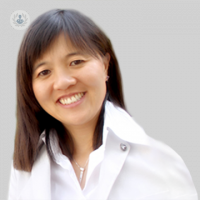Interceptive orthodontic treatment for children
Autore:Interceptive orthodontics is the early diagnosis of children’s future dental problems, such as overbites, underbites, Jaw deformities and crowded teeth. As a result, these problems can be treated and even prevented before adult teeth grow in. Having trained in both the UK and the US, Dr Moira Wong has a lot of dentistry and orthodontic expertise to share about the benefits of interceptive orthodontics, the risks of not receiving it and all the facts you need to know.

What is interceptive orthodontics?
Interceptive orthodontics, also referred to as phase 1 orthodontics, is a form of early diagnosis for children’s future dental problems. With this early diagnosis, an orthodontist can prepare the child’s jaw for when their adult teeth grow in.
Once the adult teeth come through, the orthodontist will then begin to correct the teeth usually needed but much simpler when phase 1 orthodontics has been carried out (phase 2 orthodontics). This is much more commonly known in the UK compared to phase 1, which isn’t routinely performed in the UK.
Do children need to lose all their baby teeth before receiving treatment?
In some cases after early diagnosis, an orthodontist has to wait for all the adult teeth to come in before starting orthodontic treatment, in other cases, they’ll want to start early before all of the teeth come in, in order to ensure that the teeth grow into a better position.
Why is early orthodontic treatment important for children?
Early orthodontic treatment is important due to its benefits:
- By carrying out orthodontic treatment from a young age, the complexity of future dental problems is diagnosed early, addressed or reduced, such as overbites, underbites and crowded teeth.
- It can also be a method of prevention, although this depends on each specific case.
- Phase 1 orthodontics often means that patients will have a shorter duration of treatment in phase 2, the corrective phase.
What are examples of problems that can be fixed by interceptive orthodontics?
When an orthodontist analyses a child’s teeth and finds that they're crowded, they may carry out arch expansion to create the space that their adult teeth are going to need. This ensures that the adult teeth grow into a more optimal and aesthetically pleasing position.
If the jaw is out of line, an orthodontist might carry out jaw modification therapy, so that the jaws grow into line. By limiting and enhancing jaw growth, the risk of underbites and overbites is lessened.
It’s also possible to diagnose missing teeth early. Approximately 6% of the population have an adult tooth that never grows in to replace a baby tooth. In this case, treatment options involve closing the space that the missing adult tooth will leave, or replacing it with a false tooth.
Risks of not seeking interceptive orthodontic treatment
By waiting for a child’s jaw and teeth to develop before diagnosing dental problems, it’s more likely that adult teeth will need to be extracted during phase 2 in order to treat dental problems that could have been treated without extracting teeth, had the patient received interceptive treatment.
When a child doesn’t receive interceptive treatment, as an adult it’s more likely that their adult teeth will revert to their previous position after having been corrected. The teeth have been allowed to grow into a crowded environment rather than creating space into which these teeth can grow.
At what age should I take my child to the orthodontist?
Interceptive treatment generally starts with children who are eight years old so that the orthodontist can examine how their jaw and teeth are currently developing. At this age, the dental problems they’ll have over the next four or five years are identifiable. In the US the American Orthodontic Society recommends that all children are seen for an assessment no later than 7 years old to understand that way in which the child’s teeth and jaws are growing in order to make an early diagnosis.
Is there a common cause for dental issues in children?
When the teeth or jaw aren’t growing as they should, it’s usually due to genetics, or an environmental factor such as thumb sucking.
What type of braces is best for my child?
There are many types of braces, so what’s important is to find the right type of brace for each individual. There’s a lot on the market, and the professional will advise you based on the patient, the patient’s tolerances and the level of restriction needed.
How much do braces cost for children and how long do they have to keep them in?
The cost depends on various factors:
- The patient
- The issue (creating space, symmetry, correcting a bite etc.)
- The duration of treatment
- The idea is to prevent or correct dental irregularities as much as possible, and so the professional will advise you on the length of time needed for braces.
Dr Moira Wong knows it’s difficult to treat children who don’t want braces, so she limits phase 1 treatment to around one year but no longer, so that children don’t get too frustrated.
Dr Wong’s personal treatment philosophy
From experience, Dr Moira Wong knows that typically, interceptive orthodontic treatment is something that’s performed routinely in the US. They are keen on prevention and optional treatments. Phase 1 orthodontics is not particularly taught in the UK.
Her own personal treatment philosophy is to make use of the advantages of both US and UK treatment philosophy. She does where indicated make use of the benefits of phase 1 and 2 orthodontics where most suited but limits treatment time in both phases to ensure that treatment is not protracted and the children are happy to see the changes without challenging their cooperation too much.
Dr Moira Wong is an expert in all aspects of dentistry. If you’re considering interceptive treatment for your child, or looking for dental treatment for yourself, don’t hesitate to book a consultation via her Top Doctors profile .


